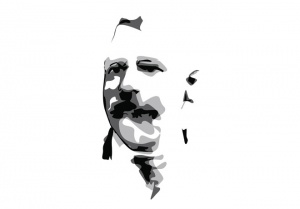Inspector Edmund Reid
Inspector Edmund Reid - H Division - Whitechapel
Inspector Edmund Reid was known as the ‘Local Inspector’. Inspector Reid was Head of CID in the Metropolitan Police’s H or Whitechapel Division. Reid took charge of the Martha Tabram murder investigation.
The Martha Tabram Investigation
The Martha Tabram investigation was always going to be a tough one:
- There were no witnesses
- Martha Tabram was not known to any of the George Yard tenants
- There was no obvious motive
- There was no immediate suspect
- None of the tenants heard the murder take place
An Inspector, Ernest Ellisdon, reported in the days after the murder that there was no blood on the stairs leading to the landing - meaning that Martha Tabram was most likely killed in the position she was found.
The dwellings were managed by superintendent Francis Hewitt, who occupied an apartment with his wife. Francis Hewitt was reported to have told reporters that 'we never heard a cry'. During the previous evening Mrs Hewitt was said to have heard a cry of 'Murder' - something she said happens rather frequently in the area.
Witnesses
Whilst on his rounds on the night of Martha Tabram's murder PC Thomas Barrett 226H had questioned a soldier loitering in George Yard, making him a witness.
PC Barrett provided the following details of the soldier:
- He was dark haired
- He was five feet nine or ten inches high
- He had a moustache
- He had a fair complexion
- He was a private in the Grenadier Guards
- He had one good conduct badge, but no medals
- His age was between 22 and 26
The Soldier
Inspector Edmund Reid arranged two identity parades of Grenadier Guards at the Tower. The first, on the 7th August 1888, included several prisoners confined to the Guardroom. The first identity parade was unfruitful, so a second identity parade was arranged for all other soldiers who had been absent or on leave the day before.
During the course of the identity parade PC Barrett identified two different men. The first man had medals - which was different to the soldier questioned in George Yard - as he had no medals. The second soldier identified by Barrett had no medals. The first soldier was dismissed due to him having medals. It's understood his name was not taken or recorded.
The second soldier was John Leary. Leary had a plausible alibi, although convoluted, and gave a full account of his evening out with Private Law.
During interview Private Law gave the same account as John Leary and both men were dismissed.
Inspector Reid's report suggested that he was sure PC Barrett had made a mistake when selecting John Leary from the identity parade.
Recent investigations also suggest there were two John Leary's severing at the same Garrison - making further investigation difficult.
Mary Connelly
Inspector Reid's second witness, a "tall, masculine-looking prostitute", visited Commercial Street Police Station on 9th August and said that she had been in the company of the deceased on Bank Holiday night.
Her name was Mary Ann Connelly - more commonly known as Pearly Poll. On 6th August Mary Connelly detailed how she and Martha had been drinking with two soldiers in Whitechapel from 10.00 to 11.45 in the evening. The soldiers were guardsmen, one a corporal, the other a private.
Mary Connelly said that the couples parted company and Martha left for George Yard with her soldier. Mary Connelly went on to inspect two identity parades. Both were unsuccessful.
In future documents Mary Connelly's input was to be classed as unhelpful. Walter Dew, a CID officer in 1888, who was attached to the H or Whitechapel Division of the Metropolitan Police, said in his memoirs fifty years later that he suspected Mary Connelly had deliberately identified the wrong men out of pique.
